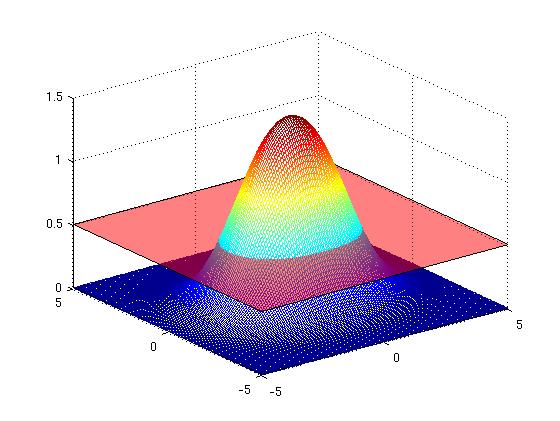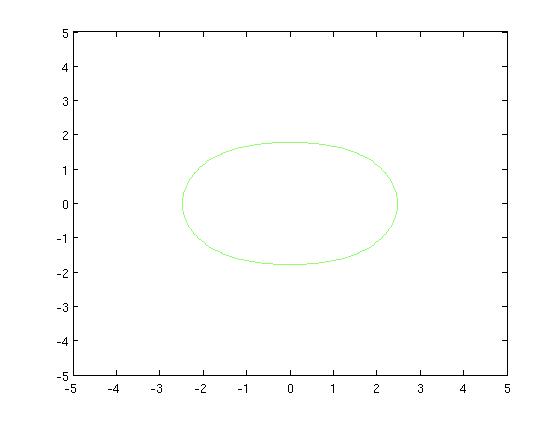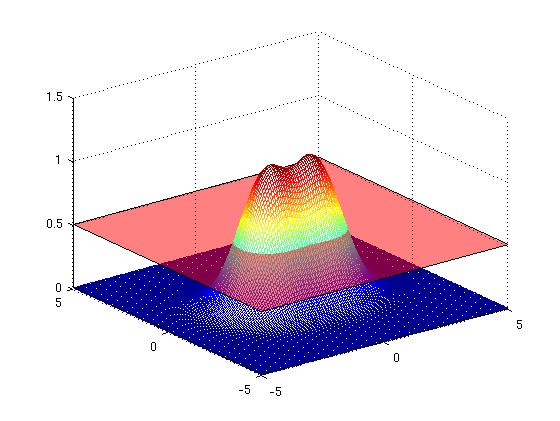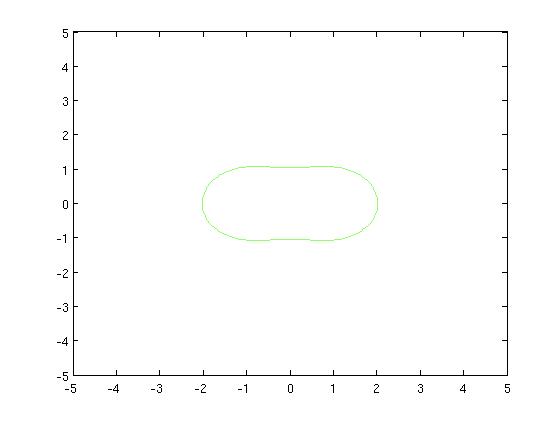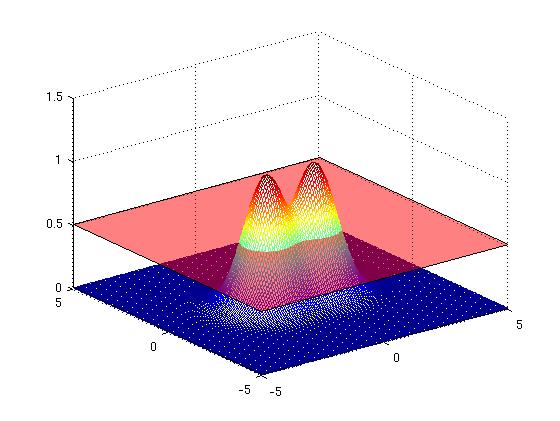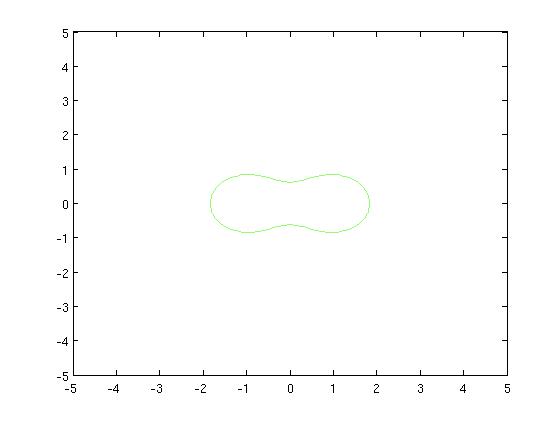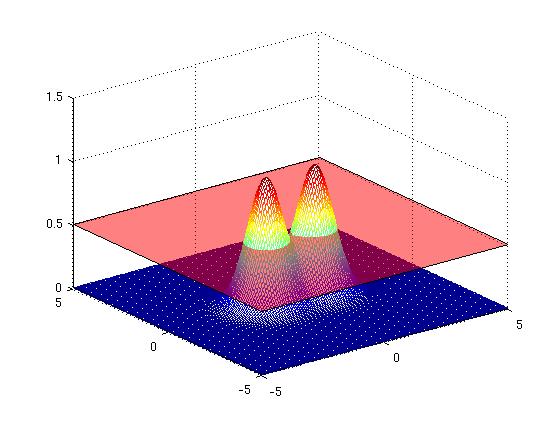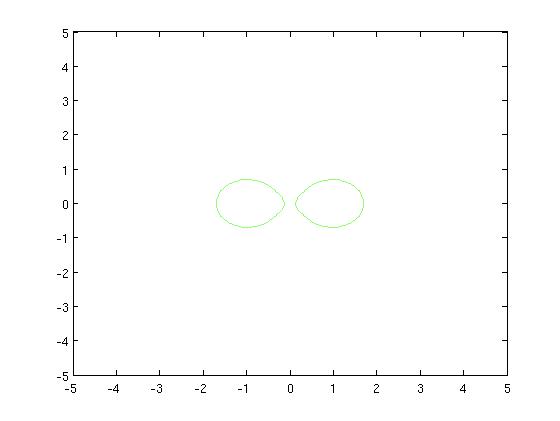ECE662: Statistical Pattern Recognition and Decision Making Processes
Spring 2008, Prof. Boutin
Collectively created by the students in the class
Contents
[hide]Lecture 28 Lecture notes
Jump to: Outline| 1| 2| 3| 4| 5| 6| 7| 8| 9| 10| 11| 12| 13| 14| 15| 16| 17| 18| 19| 20| 21| 22| 23| 24| 25| 26| 27| 28
The Last Class
Welcome to the last class of the semester! The kiwi is going to be a great resource.
Partial Differential Equations (Continued)
[Note: I do not think the difference between $ \partial $ and $ d $ is very important -- feel free to fix it if you disagree. I'm also a little sloppy with the vector symbols]
We may discretize this using a finite difference equation.
where $ u(t,x) $ is the initial guess. But we can also look at this
What does this mean? Let's consider an example.
This is the same as convolution:
[Figure: [1/3,1/3,1/3]*[(x-delx),*(x),(x+delx)]u(t,.) ]
At each successive time step, the convolution iterates on the results of the previous convolution until the solution stabilizes. (That is, until we reach the steady state solution, where $ \frac{du}{dt}=0\Longrightarrow u_{xx}=0 $)
We can use heat flow to smooth out parametric curves.
e.g. in $ \mathbb{R}^{2} $, consider the curve
We shall commonly drop the vector notation in the rest of this discussion.
[Figure: Arbitrary curve , looping from $ \tau=0 $ to $ \tau=10,000 $.]
And consider the family
satisfying the 2D heat equation
This gives us two 1-D heat equations
The solution to these equations is
If we cannot solve these analytically, we can again discretize the
solution.
Note that $ \Delta\tau\neq\Delta x $. $ \Delta\tau $ is the spacing
between the parameters, and is a constant. However, $ \Delta x $ is
the spacing of the points in the x direction, and it is certainly
not constant around the entire curve! And a little note on notation:
[Figure showing the notation]
At this point in the class, we reviewed how to solve differential equations iteratively.
How does this apply to valley-finding?
Use estimated density $ p(x) $ to define the energy of the curve in
the feature space. The simplest formulation is
It's funny that rivers solve PDEs. They find the minimal energy route
through the valleys. This is exactly what we want, because the valleys
separate the mountains, which are our clusters.
Look for a curve that minimizes E. For example, in 2D feature space, look for a curve in $ \mathrm{R}^{2} $, say $ c(\tau)=(x(\tau),y(\tau)) $,
such that
Numerically, we need to discritize the left hand side, but not the
[Figure of density points and approximated density landscape.]
[Start with curve around both mountains, this is the initial guess for the boundaries of the feature space]
[Note that the curve is discritized, each point is assigned to a different value of $ \tau $]
We can represent the points on the curve in a matrix
Then we can iterate using the equation above to find the boundaries
which minimizes the energy, and is thus the best seperation of the
clusters.
Issues with this approach
- We must fix the number of clusters
- We must assume the curve has some degree of smoothness.
[Figure of this phenomenon]
- The points tend to collapse on each other or move away from each other.
[Figure of this phenomenon] How can we overcome these difficulties? With (as the Spanish developers might call it) "De Le-vel set." (pronounced with the long e sound which doesn't really exist in English so much.)
The Level Set Approach
This method was developed by Osher and Sethian [spelling?].
Assume we are evolving a curve in $ \mathbb{R}^{2} $. Instead of doing this, we evolve a surface in $ \mathbb{R}^{3} $ for which the ``zero level set, that is the intersection with the z=0 plane is the curve we wish to evolve.
[Figure of an evolving curve]
[Figure of evolving surface instead of curve]
Although evolving such a surface can be challenging, it is definitely worth it, because our curve may undergo topology changes. How can this happen? Even though the surface evolves without topology changes, the zero-set (our curve) can change topologies and have singularities.
From the Dromedary (French: Dromadaire) to the Camel (French: Chameau)
[Figure t=0: of the one-hump animal, yielding a single curve]
[Figure t=1: The top flattens, the curve turns into a peanut]
[Figure t=2: The valley dips so we get the Chameau]
[Figure t=3: The Chameau sinks deeper in the water so that only two humps appear. The curve splits into two]
We evolve the surface until it converges, and then we can look at the resulting zero-set and count the clusters. We do not need ot know them a-priori.
As a note for those who are not taking this class: We use French here because that is the mother language of our professor (Mimi), and because we were having difficulty finding the English words for these at first! (And by "we", we do mean the entire class.)
What PDE describes this surface evolution?
Supposewhere $ \overrightarrow{N}(t,\tau) $ is normal to the curve. This is a very general equation because any curve evolution can be expressed in this fashion. Then we can consider a surface evolving$ \phi(x,y,t):=\mathbb{R}^{2}\times\mathbb{R}\rightarrow $a zero-level set at t, $ \left\{ x,y|\phi(x,y,t)=0\right\} $ is the
curve we are evolving. The Euler form of the level set isConclusion
And that's it for the semester! Have fun!

